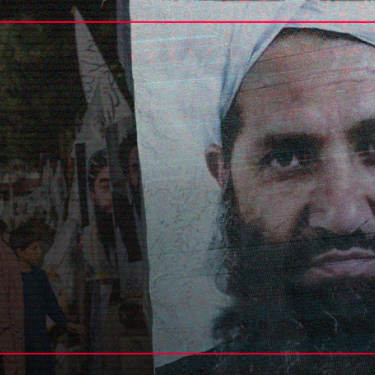Afghanistan: Media landscape suffocated by repressive Taliban directives that target women in particular

Reporters Without Borders (RSF) is alarmed by a worrying increase in the restrictions imposed on journalists, with authoritarian directives on women journalists' dress, restrictions on women's access to the audiovisual media and a ban on filming or photographing Taliban officials.
The Afghan repression continues to intensify and specifically targets women's access to the media, whether as journalists or as listeners and spectators. A series of directives issued since February illustrate this. The governor of Kandahar, in the south of the country, has banned video footage of local Taliban leaders. The chief of police in the eastern province of Khost has banned calls from women during radio or television broadcasts. More broadly, at national level, the Taliban Minister for the Promotion of Virtue and the Prevention of Vice has tightened the dress restrictions for women journalists by ordering them to wear black covering revealing only their eyes, on pain of being banned from working.
"At a time when journalists are already under the yoke of severe repression, censorship and self-censorship, new regional restrictions, which could extend to the rest of the country, and national restrictions are further destroying the Afghan media landscape. The silencing of the voices of female listeners and viewers in Khost, the ban on images of officials in Kandahar and the drastic dress restrictions on women journalists in the country are all worrying signs of the Taliban's ideological hardening, aimed particularly at women journalists. RSF calls on Supreme Leader Hibatullah Akhundzada to put an end to these repressive measures.
On 18 February, the Taliban governor of Kandahar, Mullah Shirin Akhund, gave a written order to officials and soldiers in Kandahar not to allow photographs and films to be taken during their meetings. Only written material and audio recordings are now permitted. “For the moment, the order seems to be applied selectively," says an Afghan journalist in exile who wishes to remain anonymous. “The decision is affecting the channel Radio Television Afghanistan RTA Kandahar in particular, with far fewer faces on the screen, and instead images of landscapes and buildings.... but that's how it's starting. It could become a trend. “. As a result, RTA in Kandahar is only broadcasting now the voices of certain officials speaking on topical issues.
Educational and social programmes for girls targeted
In Khost province, in an official letter dated 24 February, the police chief, Abdul Rashid Omari, banned women from appearing on radio and television programmes in the province. This decision specifically targets media broadcasting educational and social programmes for young girls, where they are invited to talk and participate. Media managers have been warned that they will be prosecuted if they contravene the order.
Only the eyes visible
On 27 February in Kabul, the Taliban Minister for the Promotion of Virtue and the Prevention of Vice warned media representatives of the possibility of a total ban on women journalists if they did not comply with a strict dress code. In other words, a black outfit covering the whole body, including the face, with only the eyes visible.
Since the Taliban regained power in August 2021, numerous restrictions on journalists have severely curtailed press freedom. Afghanistan is ranked 152nd out of 180 countries in RSF's 2023 World Press Freedom Index.
